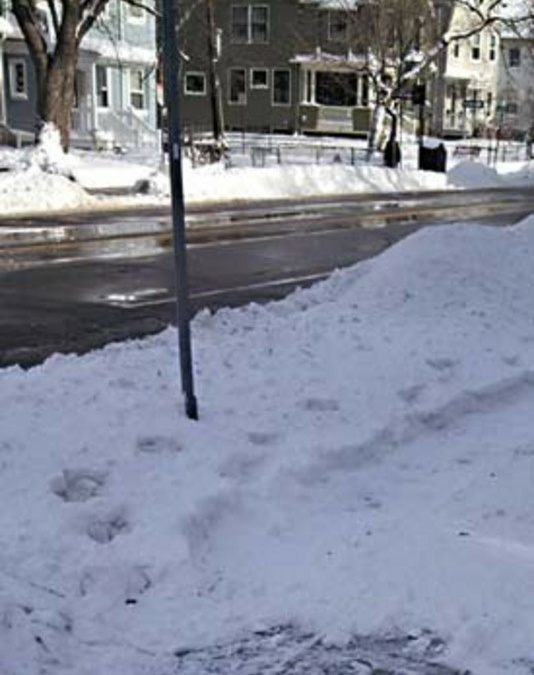1. Safe sidewalks are an important civic chore, especially within walking distance to schools. If sidewalks are impassable, children walk in the road. The road may be icy. There are piles of snow from plowing. The children may be looking at their cell phones.
If you accidentally hit a child how would you feel? How long would a serious accident affect you, let alone the family of the child you struck? The answer is – forever. There are also old people who can’t jump onto a snow pile quickly enough. And what about baby strollers, or a small child in tow.
For people who can’t shovel call your town or the Senior Center for help. Or better yet, find a child. Anyone over 11 years years can shovel a simple path. (A nice $5 bill is a good thank you.) Or perhaps you, who are reading this, can be a generous person and help a needy neighbor.
2. Now for the boring chemistry. (With many thanks to famous MIT professor of chemical engineering, Edward Merrill, for his help.) It’s actually quite interesting.
Water freezes at 32 degrees. Anything dissolved in it lowers that freezing temperature. The more concentrated the solution, the lower the temperature before it freezes and turns to ice. For instance, a 10% solution drops the freezing point by about 10 degrees.
That’s why it’s very hard to get 100 proof vodka to freeze. But don’t drink it very cold because even though the vodka is liquid, it would freeze your throat tissues something terrible. And never put it in the freezer to cool it!
3. But back to melting outside ice. Ordinary table salt, Sodium chloride (NaCl) is the cheapest and the old standby. It’s very soluble but it damages plants and concrete. And, at 26% maximum solubility it only works down to minus 8 degrees F. Less damaging salts are Potassium chloride (KCl) or Magnesium chloride (MgCl) or Calcium chloride (CaCl).
Near plants, the best one to use is Potassium chloride (KCl), maximum solubility 12%. Magnesium chloride is 5%. Calcium chloride is most soluble at 32%, so is faster and more effective to use on driveways and sidewalks.
4. These chemicals are usually sold in bags called something like ICE MELT. But always read the contents because they vary enormously. Many include table salt. Some have urea, a fertilizer, which isn’t very effective.
When ice melts to slush, shovel it off. The trick is to keep the surface clear and dry. Another trick is to sprinkle some salt on the sidewalk before it snows. Then it’s easier to shovel as the bottom is more likely to be soft.
And always remember, the chemicals can burn your skin. Never touch them with bare hands. Also don’t overdo it and give your self a heart attack. (Seriously, this is no joke.)
5. Another help with slippery ice is to sprinkle sand, grit, ashes or kitty litter on top. It lasts until the next rain or thaw, and then freezes into the ice cover. Old carpets are useful on the front walk if you are having guests but have to be taken in before rain or snow.
An alderman in Milwaukee suggests recycling left-over cheese brine to melt the ice. (It seems they make a lot of cheese there.) Well never mind the cheese, but when there’s snow and ice, you might want to be a good neighbor if a little old lady needs you.
Credit: Ruth S. Foster




























